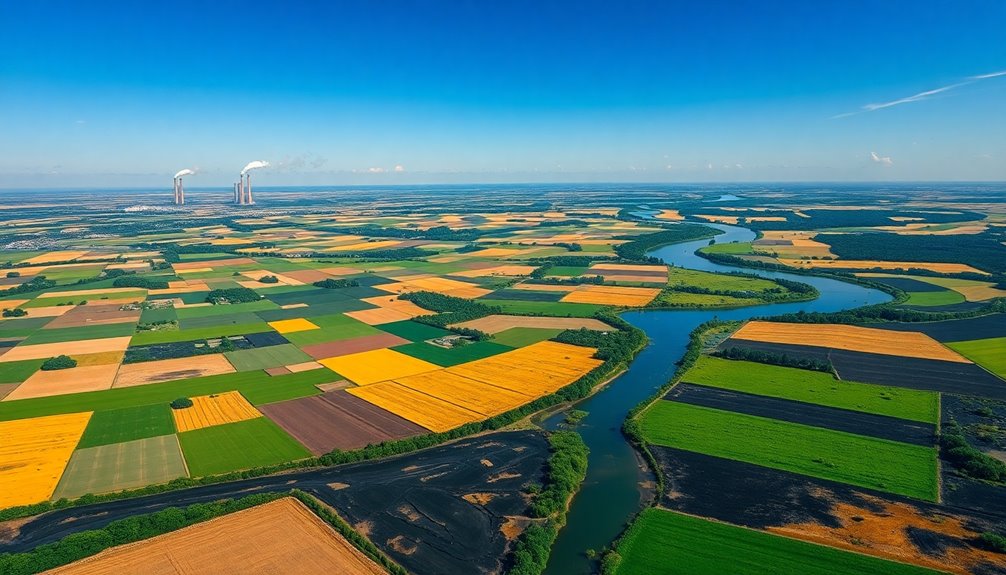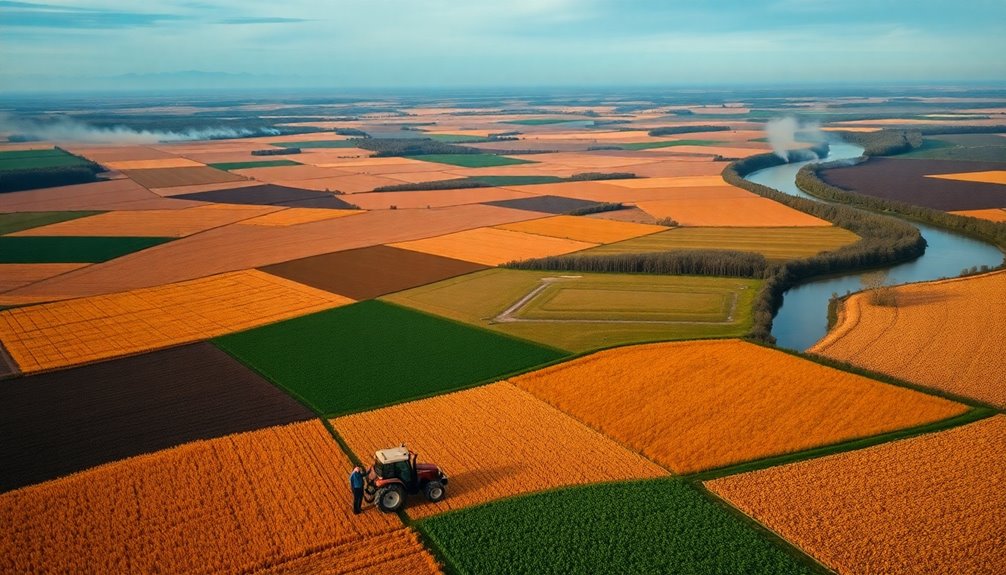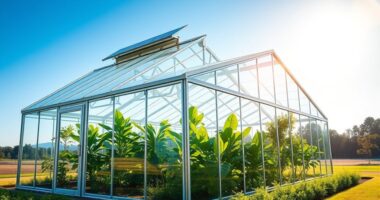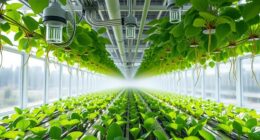Global crop commodities carry complex environmental effects that impact water, biodiversity, and ecosystems. With agriculture using around 69% of fresh water, the pressure on resources is immense. The rise of deforestation and habitat conversion leads to significant biodiversity loss. Higher CO2 levels can increase yields but often at the cost of nutritional value. Sustainable practices, like no-till farming and efficient irrigation, can mitigate these effects. Discover how these practices can shape a better agricultural future.
Key Takeaways
- Agricultural expansion leads to significant habitat conversion, resulting in deforestation and loss of biodiversity.
- Crop production consumes around 69% of global fresh water, heightening pressure on water resources.
- Climate change negatively impacts crop yields and nutritional quality, complicating food security efforts.
- Sustainable practices, like no-till farming and crop diversification, can mitigate environmental effects and enhance resilience.
- Efficient water management and resource-efficient technologies are essential for sustainable agricultural practices and environmental preservation.

As agriculture continues to be the world's largest industry, employing over a billion people and occupying nearly half of habitable land, its environmental impacts can't be overlooked. The expansion of agriculture drives significant habitat conversion, leading to deforestation and loss of biodiversity.
You mightn't realize that the practices used in farming also contribute to pollution, with pesticides and fertilizers being major culprits. This pollution contaminates waterways and ecosystems, creating a ripple effect that harms both wildlife and human health.
Water consumption is another critical issue. Agriculture accounts for approximately 69% of the planet's fresh water usage, putting immense pressure on this vital resource. As climate change progresses, it exacerbates these challenges. For instance, rising temperatures and changing rainfall patterns threaten crop health, which could reduce maize yields by as much as 24%. Sustainable agricultural practices can help mitigate these impacts by preserving habitats and improving soil health.
Agriculture's 69% share of fresh water usage intensifies resource pressure, especially amid climate change's rising temperatures and shifting rainfall patterns.
Even though higher CO2 levels may boost yields, they often come at the cost of nutritional value. You'll find that heat waves and droughts are becoming more common, further complicating farming efforts.
To combat these issues, adopting sustainable practices is essential. Improving soil health through no-till farming and cover crops can enhance carbon storage and reduce emissions. Agroforestry not only diversifies income streams but also helps sequester carbon, making it a win-win.
Efficient fertilizer usage and crop diversification can build resilience against pests and climate stress, allowing you to maintain productivity while minimizing environmental harm.
Moreover, effective water management and conservation practices are crucial. Sustainable irrigation methods can cut down water consumption, while land conservation helps preserve natural habitats.
Implementing resource-efficient technologies can support your agricultural endeavors while protecting ecosystems. As you navigate the complexities of global crop commodities, remember that the choices you make today can significantly impact our environment for generations to come.
Frequently Asked Questions
How Do Crop Commodities Impact Local Communities' Economies?
Crop commodities significantly boost local economies by creating jobs in agriculture, processing, and transportation.
When you buy local produce, you help strengthen community ties and support sustainable practices. This spending circulates within the community, generating further economic activity.
As local farmers thrive, they often stimulate nearby businesses, leading to more job opportunities. Engaging in community-supported agriculture not only enhances food security but also promotes resilience against economic fluctuations.
What Role Do Governments Play in Regulating Crop Production?
Did you know that over 50% of U.S. farms rely on government support to stay afloat?
Governments play a crucial role in regulating crop production by enforcing environmental standards, ensuring compliance with safety laws, and providing economic assistance.
They also promote sustainable practices through incentives, manage risks with crop insurance programs, and oversee supply chains for efficient distribution.
How Do Consumer Choices Influence Environmental Outcomes?
Your choices as a consumer directly shape environmental outcomes. When you opt for sustainable products, you signal demand for eco-friendly practices, prompting companies to adapt their strategies.
If you prioritize local goods or reduce consumption, you help lower carbon footprints. However, if cost pressures make you hesitate, the impact can wane.
What Are Alternative Crops With Lower Environmental Impacts?
Think of alternative crops as nature's superheroes, swooping in to save the environment.
You'll find options like soya, which lowers greenhouse gas emissions, and cucurbits that boost biodiversity. These crops conserve water and enhance soil health, creating a thriving ecosystem.
Using multispecies mixes or cover crops not only improves resilience but also cuts costs.
As consumer demand for sustainable practices rises, embracing these alternatives can lead to a greener future for all of us.
How Can Farmers Adopt More Sustainable Practices?
To adopt more sustainable practices, start by implementing crop rotation to boost soil health and reduce pests.
Consider organic farming techniques to minimize chemical use and enhance biodiversity.
Utilize conservation tillage to protect soil structure and reduce erosion.
Integrate efficient irrigation systems, like drip irrigation, to conserve water.
Engage your community for shared knowledge and explore market access for sustainable products, ensuring both profitability and environmental responsibility.
Conclusion
In the grand tapestry of global agriculture, every crop commodity we cultivate weaves a thread of environmental impact. While these crops provide essential resources, they also stir up complex challenges for our planet. By choosing sustainable practices and supporting eco-friendly options, you can help balance the scales. Remember, each bite you take can either nourish the Earth or deplete it. Let's cultivate a future where both people and the planet thrive together.









